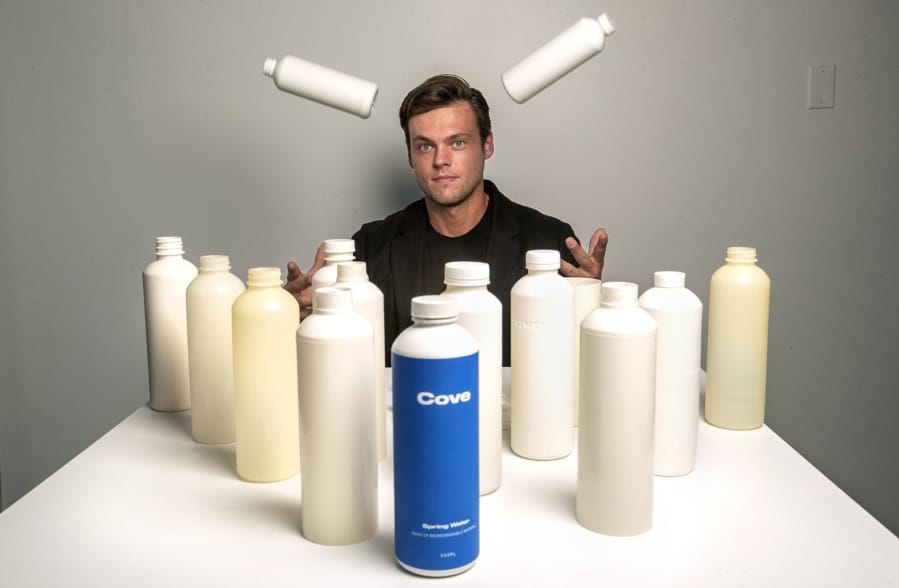LOS ANGELES — Does the world really need another brand of bottled water?
Alex Totterman believes it does, if the packaging is completely biodegradable.
And his Culver City, Calif., start-up has the backing of some environmentally woke business leaders, including Salesforce Chief Executive Marc Benioff and former News Corp. executive James Murdoch, who has invested a tiny but undisclosed portion of the approximately $2 billion he netted when his family sold most of 21st Century Fox to the Walt Disney Co.
Cove’s new water bottle, which is scheduled to get a small pilot launch in December and hit store shelves more broadly in January, is the first to be made entirely from biodegradable materials, the company contends, including the bottle cap, label and adhesive.
The path toward a fully biodegradable product hasn’t been easy, Totterman said, but is important given the abundance of plastic waste in every part of the environment, even in places where humans seldom tread. Cove is up against criticism that less chic options, such as tap water, are a better environmental choice than having your H2O shipped from some natural spring in another state or from halfway around the world.
“Plastic bottle beverages are the kind of single-use products that we should be moving away from most aggressively,” said Alex Truelove, director of the Zero Waste Campaign for the U.S. Public Interest Research Group. “The metaphor I’ve used most often is, ‘if your bathtub is overflowing, the first thing you do is turn off the tap.'”



